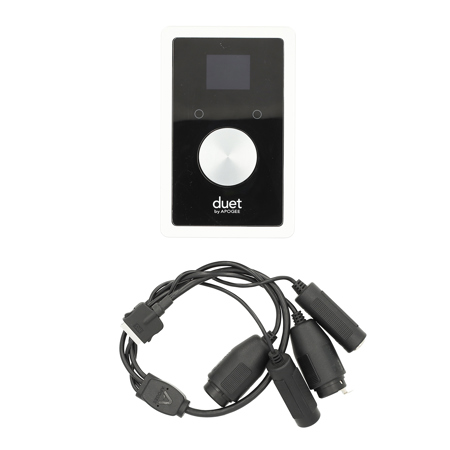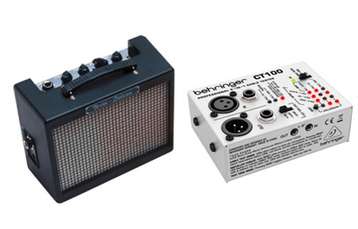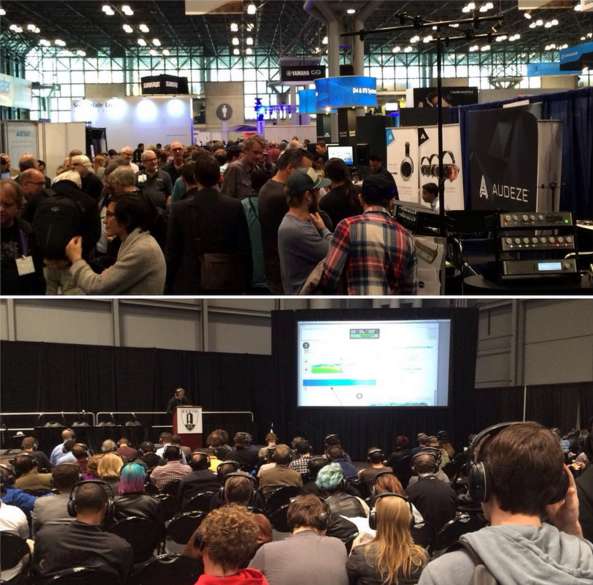







See Options
Need help? Ask our experts.
Review Summary
iPod touch (5th generation)
iPod touch (4th generation)
iPhone 5s, iPhone 5c, iPhone 5
iPhone 4s, iPhone 4 (with optional 30-pin adapter)
iPad (4th generation)
iPad (3rd generation),
iPad 2 (with optional 30-pin adapter)
iPad mini
Mac:
Any Mac Core Audio compatible application
Recommended apps: Logic, GarageBand, MainStage, Final Cut, Pro Tools, Ableton Live, Digital Performer, Studio One, Cubase and Nuendo
iOS:
Any
USB 2.0
1 x XLR microphone (on breakout cable)
1 x 1/4" TS phone instrument (on breakout cable)
2 x balanced line outputs, +20 dBu maximum output level
1 x independent 1/4" (3.5 mm) stereo headphone output
No
No
Yes
Yes
Max Input Level (+4dBu ref): +20dBu
Max Input Level (-10dBV ref): +6dBV
Input Impedance: 5KOhm
Frequency Response 20 Hz -20kHz: > +/-0.2dB (at 44.1kHz)
Relative THD + N: -106dB (at 96kHz)
Dynamic Range: 114dB (A-weighted)
Max Output Level (+4dBu ref): +20dBu
Max Output Level (-10dBV ref): +6dBV
Line Output Impedance: 90 Ohm
Max Output Level Headphones: 19dBu
HPH Output Impedance 30 Ohm.
Frequency Response 20Hz -20 kHz: > +/- 0.05dB (at 44.1kHz)
Relative THD+N: -113dB (at 96kHz)
Dynamic Range: 123dB (A-weighted)
USB bus powered
Mac OS:
Computer: Intel Mac 1.5GHz or faster
Memory: 2GBRAM minimum, 4GBrecommended
OS: 10.6.8, 10.7.5 or greater
Connection and Power: Any available USB port on a Mac
USB bus powered; DC power optional
(DC power supply included)
iOS:
iOS Version: 6 or greater
Connection: Lightning dock connector or 30-pin with optional adapter
DC power required (DC power supply included)

A guide to live DJ setups and the equipment you need to get the dance floor moving.

Choosing the perfect gift for someone special is never easy. It is even more difficult when that special person is a musician. You’ve seen their studio and have no idea what all the knobs and lights do. You smile and nod as they roll around flicking ...

This past weekend was the AES version of Comic Con: The 139th International AES Convention. I don’t blame you if you missed it. Even for NYC, this weekend had a lot of distra...
The Apogee Duet is an award-winning audio interface, headphone amp and MIDI interface making it easy to create professional recordings anywhere on your iPod touch, iPhone, iPad or Mac. With Apogee's legendary digital audio conversion and world-class mic preamps, Duet is the best way to capture your music with incredible dimension and detail. The new Duet for iPad and Mac features special circuitry designed to deliver professional performance for iPad use along with low latency USB 2.0 performance for Mac. And with the addition of MIDI I/O you can connect and power a Core MID compatible keyboard/controller while using Duet with your iPad or iOS device.
Apogee Duet is the Best Choice for Your Studio
Apogee products like Duet, Ensemble and Symphony I/O have been instrumental in creating countless GRAMMY and OSCAR winning recordings and have set the industry standard in professional recording for over two decades. Duet is built solidly on this reputation.
Soft Limit Protection From Digital Over's
Soft Limit can be heard on countless platinum selling records around the world. Once a technology exclusively reserved for Apogee's most advanced audio converters, Soft Limit is included in Duet and can be enabled in Apogee Maestro software. This superior analog design prevents the digital clipping that causes distortion by instantaneously rounding off transient peaks before they hit the analog-to-digital converter.
A Difference You Will Hear
From the mic preamps to the AD/DA converters and the clocking, Duet is best-in-class and cutting-edge Apogee technology. With components carefully selected in critical listening tests and a highly efficient circuit design, Duet was built by Apogee engineers to make a difference you can hear.
Pristine, Next Generation AD/DA Converters
Duet's AD/DA converters are designed to deliver the purest recordings and best listening experience possible. Duet's efficient circuitry and state-of-the-art components provide a simplified signal path resulting in incredibly transparent recordings.
Smooth, Detailed World-Class Mic Preamps
Much like the AD/DA converters, Duet's mic preamps feature the latest components and offer seamless click-free transitions as the gain increases and decreases throughout the incredible range of 0-75dB. Duet's mic pres are suitable for all dynamic, condenser or ribbon microphones, allowing you to capture any sound without compromise.
ESS Sabre32 DAC Technology
ESS Sabre32 32-bit Hyperstream DAC with Time Domain Jitter Eliminator offers unequalled dynamic range, ultra low distortion and unmatched audio clarity free from input jitter. While ESS Sabre32 DAC has been widely recognized and employed in the audiophile community as the next step in converter technology. Compared to older 24-bit technology, the Sabre32 DAC's 32-bit filter processing results in significantly lower noise and distortion, for a pure listening experience free from artifacts. 32-bit digital attenuation ensures that sonic purity is maintained at any listening level. Time Domain Jitter Elimination removes clock inconsistencies from the incoming digital data, so the converted analog output preserves the clarity and soundstage detail of the original recording.
Inputs & Outputs
Breakout Cable
Duet's breakout cable includes 2 combination mic/instrument connectors (XLR and 1/4" built into a single connector) and 2 balanced 1/4" connectors for speakers. The elegant single cable-to-junction design allows for easy cable management and the locking connection to Duet is robust and stylish.
2 Analog Inputs
Duet's 2 combination input connectors (XLR and 1/4") allow you to connect microphones, guitars and keyboards or your favorite external mic preamps, compressors and EQs.
4 Analog Outputs
Duet includes 4 analog outputs. 2 1/4" balanced outputs for connection to speakers or outboard equipment and a separate, independently controlled 1/4" stereo headphone output. With these 4 outputs it's possible for a DJ to monitor a separate mix in headphones while sending a house mix to the club, a live performer to send a click track to in-ear monitors while sending a backing track to front-of-house and a recording engineer to send a headphone mix to the performer while dedicating the main outputs to studio monitors.
MIDI
Duet provides a single USB MIDI connection for your CoreMIDI compatible keyboard, synth or DJ controller. This eliminates the need for an external MIDI interface and promotes an all-in-one music creation solution where Duet and Maestro manage all audio and MIDI. On iPad, Duet's MIDI connection allows both Duet and a keyboard or DJ controller to be connected at the same time to the iPad's single connector (Lightning or 30-pin).
Control
Full Color OLED Display
The high resolution OLED screen built into Duet's top is the main control center for Duet, delivering visual feedback for multiple functions including metering, numeric value for input and output levels, input grouping and phase, muting, phantom power and Soft Limit indication.
Configurable Touchpad's
Duet also introduces configurable touchpad's. The 2 touchpad's, located on either side of the encoder knob, allow you to quickly access output functions such as "Mute Outputs", "Dim Outputs", "Sum to Mono" or "Toggle Headphone Source". Each are assignable using a drop-down menu within Apogee's new Maestro 2. This unique feature allows you to select the function you want and access it directly from Duet without having to look at software.
Multi-Function Controller Knob
Along with its sleek aluminum chassis, the multi-function controller knob is one of the most recognizable features of Duet's design. This central control feature allows you to quickly and easily toggle through Duet's inputs and outputs and set levels while looking at Duet's dynamic OLED display.
Music Creation on iPad
A Revolution in Personal & Professional Recording
Apple's iPad is an incredible audio recording and music creation.
iPad Puts You in Touch with Your Creativity
Interacting with iPad to make music is like playing an instrument. Whether you are moving faders on a mixer, adjusting software parameters or editing a waveform, iPad's multi-touch interface is a more hands on environment and superior to mouse clicks or track pad swipes.
Setting up Your Studio Has Never Been Easier
iPad makes everything easier with a simplified user interface and plug and play connectivity for accessories like Apogee audio interfaces.
There's a Music App for Everything
There are hundreds of music apps for iOS and iPad. With multi-track recording DAWs like GarageBand and Auria, synths and drum machines like Animoog and DM1, utilities and guitar effects like Audiobus and JamUp Pro, the music creation offering for iPad is vast and varied.
Share Your Music
Sharing functionality is built-in to most apps, making it easier than ever to move files and collaborate on different devices including iPad to Mac.
Pro I/O Meets iOS
Apogee The First to Make Professional Recording on iPad a Reality
Apogee pioneered studio-quality recording on iPad with JAM, the first digital guitar input and MiC the first professional digital microphone for iPad. JAM was featured in Apple's iPad 2, GarageBand launch video.
Maestro Control Software for iOS
Apogee ONE, Duet and Quartet are the first audio interfaces to feature software control made for iPad and iOS devices. Apogee's Maestro lets you access all hardware parameters and monitor with a low latency mixer.
Direct Digital Connection to iPad
Apogee ONE, Duet and Quartet for iPad and Mac feature special circuitry that makes a direct digital connection to iPad and iOS devices and is certified by Apple's MFi (Made for iOS) program.
DC Power Charges iPad
In audio, adequate power is essential for excellent sound quality. With a direct digital connection and an external power source, ONE, Duet and Quartet are able to charge your iPad while you record so your work will not be interrupted.
Apogee Maestro Software
Advanced Software Control for Advanced I/O
Access all control functions and settings with Maestro, Apogee's comprehensive software control application. Maestro features a single window interface with quick access to all device and system settings. Select your input type, enable Soft Limit on mic and instrument inputs and use the mixer for low latency monitoring.
All New Maestro Developed for iPod Touch, iPhone and iPad
Apogee's new free Maestro app for iOS brings total hardware control to iPad. Designed to create a seamless transition between Mac and iOS, Maestro's design was customized for each device; iPhone, iPad and Mac, ensuring an intuitive user interface across every platform.
USB 2.0 - High Speed, High Performance
Faster than FireWire
Duet features USB 2.0 High-speed connectivity to Mac. Advances in the Mac's Core Audio driver have made USB faster than FireWire 400 with incredible latency performance. And there's a USB port on every Mac.
As Fast As USB 3.0
While USB 3.0 offers approximately 10x the bandwidth of USB 2.0, USB 2.0 far exceeds the bandwidth Duet requires for its 2 inputs and 4 outputs, delivering exceptional audio performance without compromise. Apog